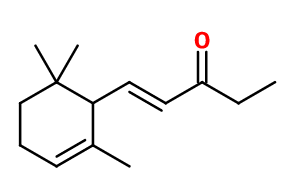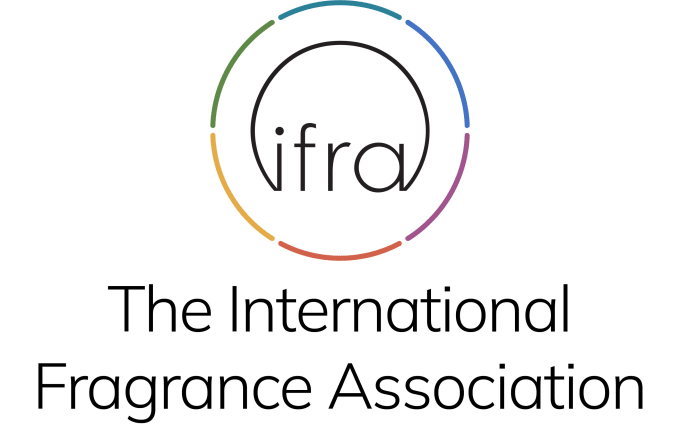
Photo credits: ScenTree SAS
| Company | Ingredient Name | ID | Comments | Naturality | Certifications | Purity | Latin name | Treated part | Geographical origin | MOQ |
|---|---|---|---|---|---|---|---|---|---|---|
|
|
Isoraldéine 70 - 30 Gr | - |
Visit website
|
- | - | - | - | - | - |
General Presentation
-
CAS N° : 1335-46-2
-
EINECS number : 204-846-3
-
FEMA number : 2714
-
FLAVIS number : 07.036
-
JECFA number : 404
-
Appearance : Colorless to pale yellow liquid
-
Density : 0,93
-
Volatility : Heart/Base
-
Price Range : €€
Physico-chemical properties
-
Molecular formula : C14H22O
-
Molecular Weight : 206,3 g/mol
-
Log P : 4,7
-
Fusion Point : Donnée indisponible.
-
Boiling Point : 238°C
-
Detection Threshold : 1,706 ng/l air
-
Optical rotation : Donnée indisponible
-
Vapor pressure : Donnée indisponible
-
Refractive Index @20°C : Donnée indisponible
-
Acid Value : Donnée indisponible.
-
Flash Point : 124°C
Uses
Uses in perfumery :
Isoraldeine 70® is used in leather notes to bring a facet of violet flower, as it is more leather than Isoraldeine 95®. Can be used in a tea note, combined with Hédione®, Damascone-Beta® and Bergamot EO.
Year of discovery :
Data not available.
Natural availability :
Isoraldeine 70® is not available in its natural state.
Isomerism :
As for conventional Ionones, the synthesis of alpha-Isomethylionone gives rise to other isomers of this molecule. beta-Isomethylionone has a more ambergris, orris and less fruity smell. Alpha-Irone and Cashmaeran are constitutional isomers of Isoraldeine®. Nevertheless, Cashmeran® has a distant smell, while Irone is closer to its violet aspect.
Synthesis precursor :
Isoraldeine 70® is not a precursor to the synthesis of another compound of olfactory interest.
Synthesis route :
Isoraldeine 70® is composed of a predominantly methylionone isomer, called alpha-Isomethyl Ionone. The synthesis of methylionones is made from Citral and methyl ethyl ketone (instead of acetone for ionones). This synthesis step gives rise to two molecules called n-methyl pseudoionone and Isomethyl pseudoionone, both having cis and trans diastereoisomers. The ratio of one molecule relative to the other is favoured by the choice of the reaction catalyst: the stronger the catalyst base, the more Isomethyl pseudoionone will be favoured. For the cyclization step of Pseudoionone, as for Alpha-Ionone, the use of concentrated phosphoric acid favours alpha-Isomethylionone rather than the beta or gamma isomer. In general, each isomethyl ionone synthesis results in the formation of isomers of the desired molecule. In the case of Isoraldine 70®, its purity can reach 75% maximum (comparision with Isoraleine 95®).
Regulations & IFRA
Allergens :
This ingredient does not contain any allergen.
IFRA 51th :
This ingredient is restricted by the 51th amendment
- Quantitative limit on the use :
-
Cat.1 Cat.2 Cat.3 Cat.4 Cat.5A B C DCat.6 5,4 % 1,6 % 32 % 30 % 7,6 % 7,6 % 7,6 % 7,6 %18 % Cat.5A B C DCat.6 7,6 % 7,6 % 7,6 % 7,6 %18 % Cat.7A BCat.8 Cat.9 Cat.10A BCat.11A BCat.12 61 % 61 %3,2 % 59 % 100 % 100 %100 % 100 %No Restriction Cat.10A BCat.11A BCat.12 100 % 100 %100 % 100 %No Restriction
-
Restricted ingredients: notes
The above limits apply to Methyl ionone isomers used individually or in combination.
Specified ingredients: notes
Pseudo methyl ionones (CAS numbers 26651-96-7, 72968-25-3, 1117-41-5) should not be used as fragrance ingredient as such. A level of up to 2% of Pseudo methyl ionones as an impurity in Methyl ionones is accepted.


